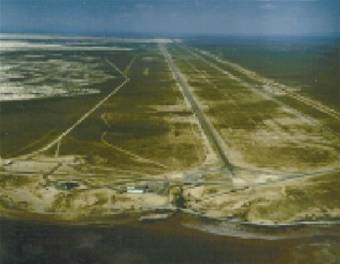Chapman University conducted a survey that asked nearly 1,500 Americans about 88 different fears, and it included their beliefs in the paranormal, the supernatural, and the pseudoscientific.
The results were about what you would expect in terms of the 40% of Americans who believe in ghosts and the 18% who feel aliens are currently visiting the earth. I was a bit surprised that only 11% of Americans believe Bigfoot is a real creature, but for our purposes the most depressing finding is that 20.3% of Americans—1 in 5!—professed a belief in ancient astronauts. According to sociologist Christopher Bader of Chapman University, who designed the survey, belief in ancient astronauts and other paranormal phenomena is positively correlated with an overall higher level of fear. Bader added that belief in the paranormal was strongest among those with the least education, and those people were also the most fearful.
I suppose it surprises no one that low education, fearful audiences are also the key demographic for cable TV series focusing on the paranormal, the supernatural, and the pseudoscientific.
But I can’t get over the fact that 1 in 5 Americans now believes in ancient astronauts. Technically, the question, which asked whether respondents believe aliens visited earth in the ancient past, could encompass any belief from a lone alien explorer at the dawn of time to the active involvement of aliens in running gold-mining operations in Sumer. It was a little broad.If those results are generalizable to the entire population, that would translate to more than 60 million Americans. This is a shocking turnaround from a decade ago and almost certainly due to the influence of cable television, specifically the History Channel’s Ancient Aliens. It is, of course, not alone, and over the past few years ancient astronaut programs have aired for hundreds of hours across nearly a dozen major cable channels. In fact, survey results for a belief in ancient astronauts seem to closely correlate with the amount of media focused on the ancient astronaut theory.
Archaeologist Ken Feder surveyed college archaeology students’ attitudes on pseudo-historical claims in the 1984 and again in the 1994 and the early 2000s. The sample size was about 1,000 students per survey. He found that just after the first wave of ancient astronaut excitement had ended, in the 1980s, one in four college students (27%) professed a belief in ancient astronauts, though only mildly. This is in line with a 1986 survey by Peter G. Stone, which noted that Erich von Däniken was the public’s most cited author on archaeology, and the only one most respondents could remember.
Ten years afterward, at the start of the 1990s alternative history revival (spurred by nascent cable TV, the Stargate movie, as well as the X-Files), around a third of students (31%) claimed to believe or suspect aliens had a hand in ancient history, and this time they were more certain in their belief. But when Feder repeated the survey in the early 2000s, during the lowest point for the ancient astronaut theory in the media (when even I had assumed it was dead), fewer than 10% of students believed in ancient astronauts. These results were published in 2006 in Garrett Fagan’s Archaeological Fantasies, at a time when there was relatively little pseudo-history on cable TV. (It was the era of ghost hunting and psychics; Ghost Hunters debuted in 2004.) Ancient Aliens would not debut until 2010, following a well-received 2009 two-hour pilot special.
Another survey, conducted three years after Ancient Aliens to promote a competing show on NatGeo, claimed that 36% of Americans believed the Great Pyramid and Stonehenge were clues to ancient astronaut activity and that 77% of Americans believed aliens visited the ancient earth. But I found this survey to be somewhat unreliable due to its use of online polling and email invitations, which almost certainly overstated belief by encouraging participation from self-selecting respondents who were biased in favor of aliens.
While these surveys are not precisely generalizable the same as the Chapman University survey, they do indicate a rather distressing trend: Belief in ancient astronauts, and the strength of that belief, appears to be correlated to how often the media discuss ancient astronauts. In other words, if we map survey results against media coverage, it would appear that media discussion of ancient astronauts precedes expressions of belief in ancient astronauts, thus suggesting not just a correlation but direct causation whereby TV creates belief.
